Whether liked or hated, Napoleon Bonaparte still fascinates today. Since its exile to the remote island of St. Helena, many mysteries have surrounded the French Emperor. One of them revolves around his burial place. Many tourists come to the Dome church in the Hôtel des Invalides (7th arrondissement of Paris) to admire the tomb of the defeated Emperor. And almost all of them will leave this historic place without knowing that the original tombstone of Napoleon still lays in a quiet garden nearby. Come with me, I’ll show you where to find it!
But before I reveal the exact place of the original tombstone of Napoleon, let’s go back in time to understand why the three slabs you’re about to discover are so interesting!
Napoleon’s exile on St. Helena

Following his defeat at the Waterloo Battle (15th June 1815) Napoleon was taken in exile by the British under guard to the lonely island of St. Helena in the South Atlantic, a British possession.
The defeated Emperor resided at Longwood House from December 1815.
There Napoleon wrote his memoirs. They were the last and greatest piece of Napoleonic propaganda and created a legend that endured for more than a century.
Napoleon Bonaparte died on the 5th May 1821. His last words were: “France, l’armée, tête d’armée, Joséphine” (France, the army, head of the army, Joséphine).
In his will, Napoleon had asked to be buried in Paris on the banks of the Seine “in the midst of the French people [whom I] loved so much“. However, the British governor insisted that he should be buried on the island, in a place called the Valley of the Willows.
Placed in a solitary spot, the tomb of Napoleon was covered by three bare slabs placed level with the soil.
The retour des cendres: Napoleon’s repatriation
The ‘retour des cendres‘ (returning of the ashes) is an episode that relates the return of the mortal remains of Napoleon in the Hôtel des Invalides, Paris.
In 1840, Louis Philippe I, King of the French, asked the British the permission to return Napoleon’s remains to France. It was decided they would be transferred to the Invalides during a state funeral held in Paris.
On the 7th July 1840, François d’Orléans, Prince of Joinville (1818-1900) left Toulon and set sail to St. Helena island on the frigate La Belle Poule to bring back the remains to France.

It took her 93 days to reach the remote island of St. Helena island. La Belle Poule arrived on the 8th of October.
The exhumation of the body took place on the 14th of October.
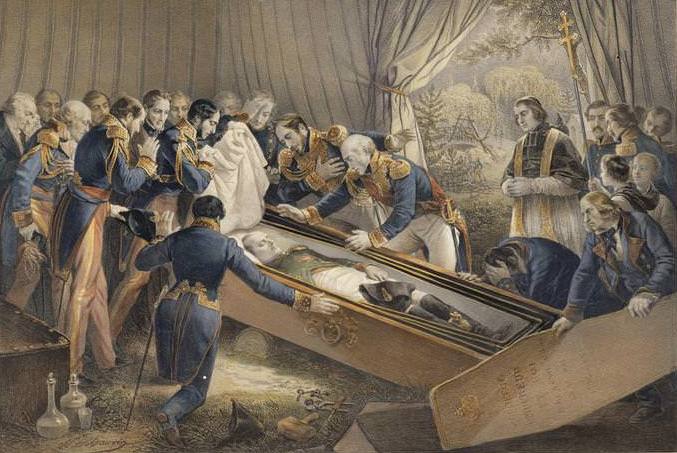
The following day the remains of Napoleon were loaded onto La Belle Poule.

The frigate set sail 4 days later.
La Belle Poule arrived in Cherbourg on the 30th of November. On the 8th of December, Napoleon’s remains were transferred to the steamship Normandie.
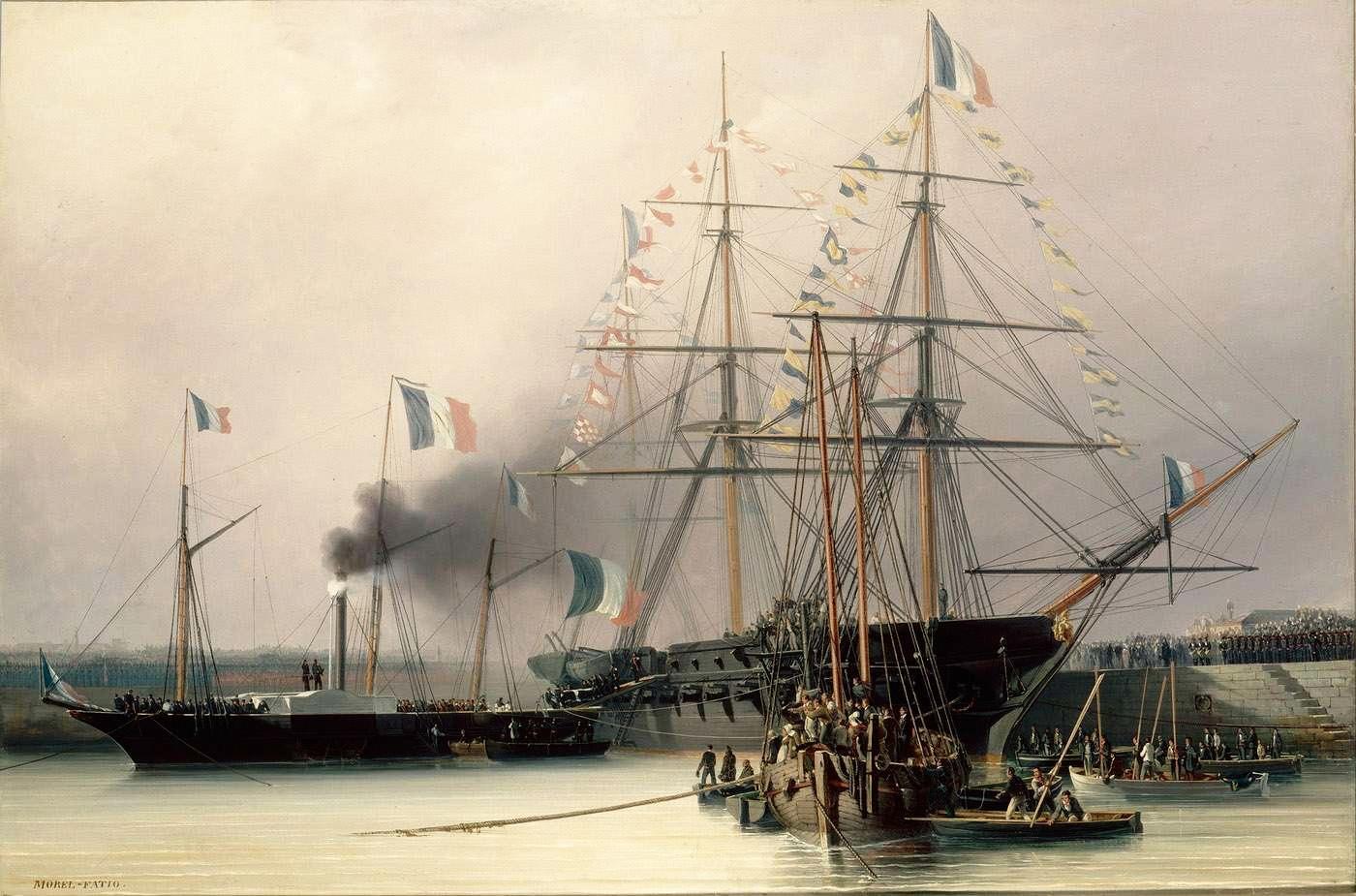
The boat carried the remains to Le Havre and up the Seine to Val-de-la-Haye near Rouen. From there they were transferred to La Dorade which moored at Courbevoie on the 14th of December.

The reburial of Napoleon’s remains to Les Invalides took place in Paris on the 15th of December.
A glorious funeral cortège proceeded from the Pont de Neuilly to Les Invalides via the Arc de Triomphe, the Champs-Élysées, the place de la Concorde and the Esplanade des Invalides.
Napoleon’s resting place in Les Invalides

The coffin was placed in the chapel of Saint-Jérôme, a side chapel of the Dome church. Plans to transfer it right under the Invalides’ gilded dome were designed by architect Louis Visconti in 1842. The architect had a circular hollow cut beneath the dome to create a sort of an open crypt.
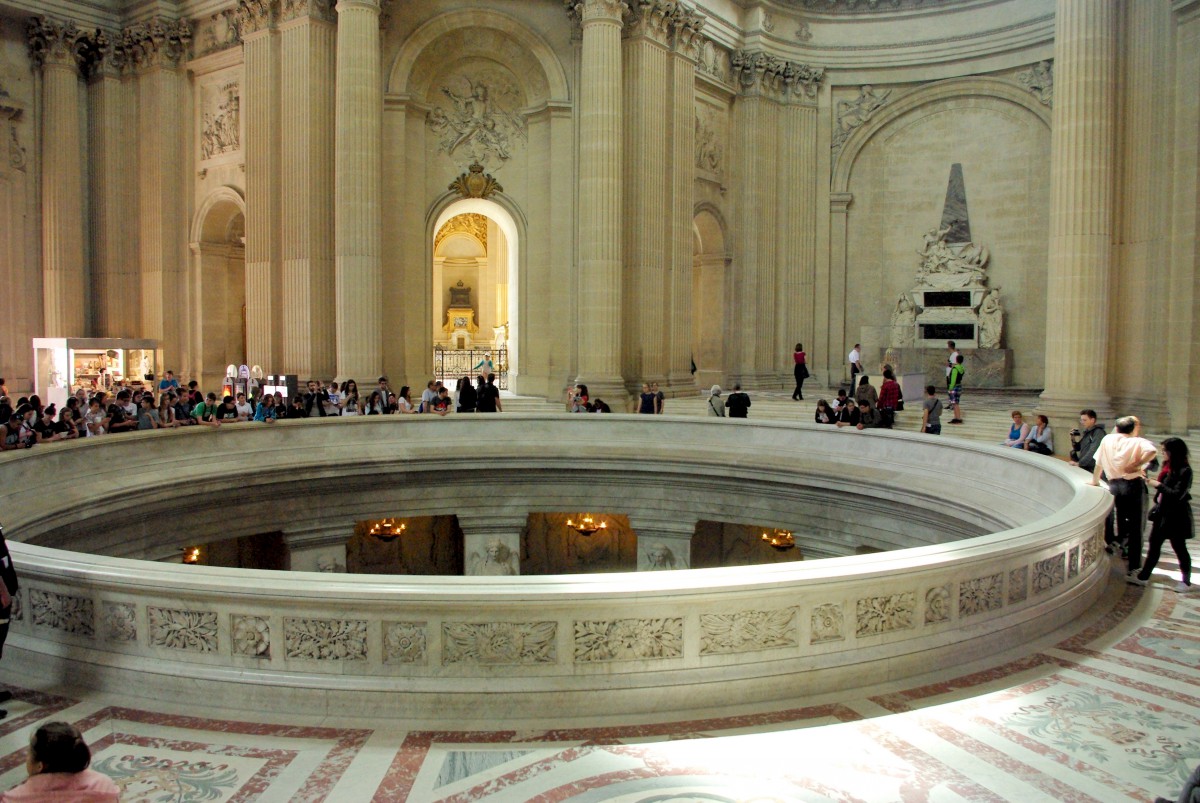
In its centre was placed a large sarcophagus containing the coffin of Napoleon.
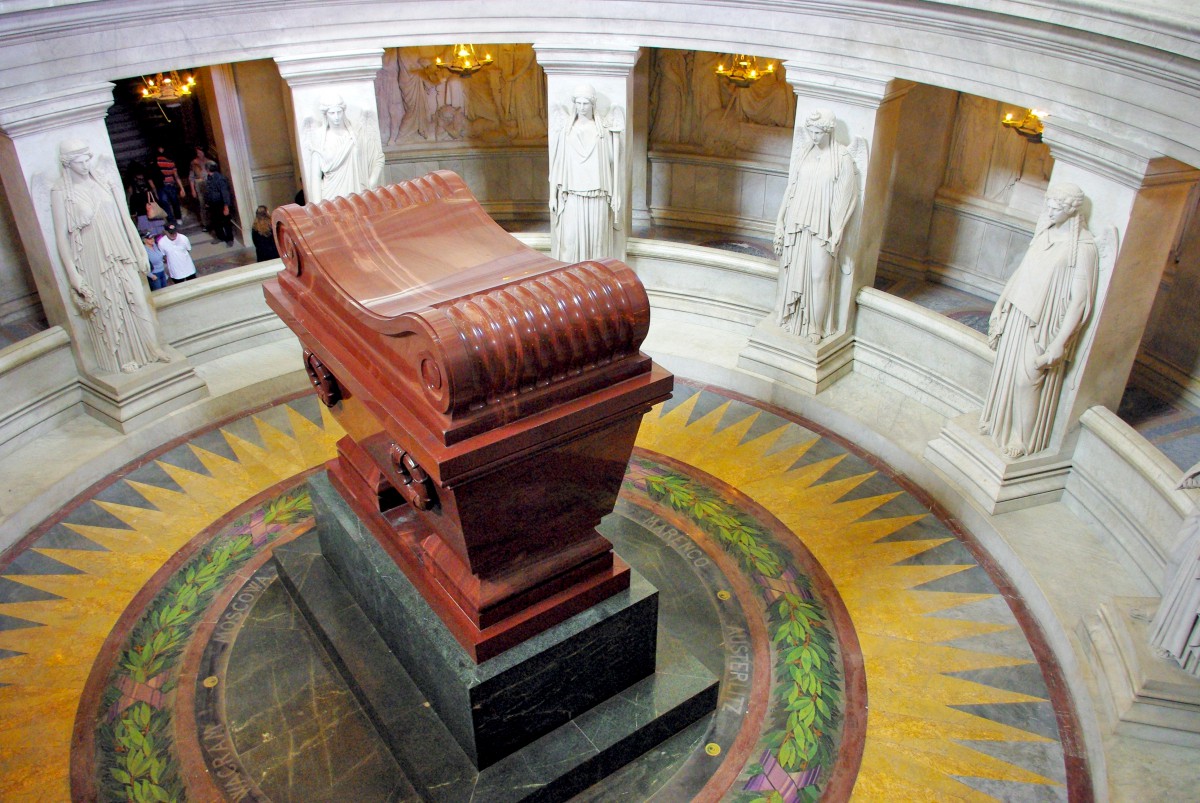
Works ended in 1861 and the transfer of Napoleon’s coffin from the chapel of Saint-Jérôme to the new crypt was organised on the 2nd April 1861. The ceremony took place in the presence of Emperor Napoleon III, nephew of Napoleon Bonaparte.
But the mortal remains of the Emperor were not the only thing brought back from St. Helena. The three slabs that formed the tombstone of Napoleon in the Valley of the Willow were also repatriated to France on the frigate La Belle Poule.
And to this day they lay somewhere in a garden of Les Invalides, unnoticed by the crowds of visitors who flock here to see Napoleon’s tomb under the Dome church.
Where is the original tombstone of Napoleon?
To see the tombstone of Napoleon, walk along the Corridor de Nîmes which is located on the left side of the Dome church. Through the windows that open onto the Cour de Nîmes you’ll see the original tombstone that was brought back with Napoleon’s remains. The three slabs of the original tombstone are placed in front of a shrub.
Here it is: the initial resting place of Napoleon on the island of St. Helena!
Now take the stairs at the end of the corridor. You’ll get another glimpse of the tombstone of Napoleon:
Find out more about the Retour des Cendres in this well-documented article on Wikipedia.
Visit the Hôtel des Invalides
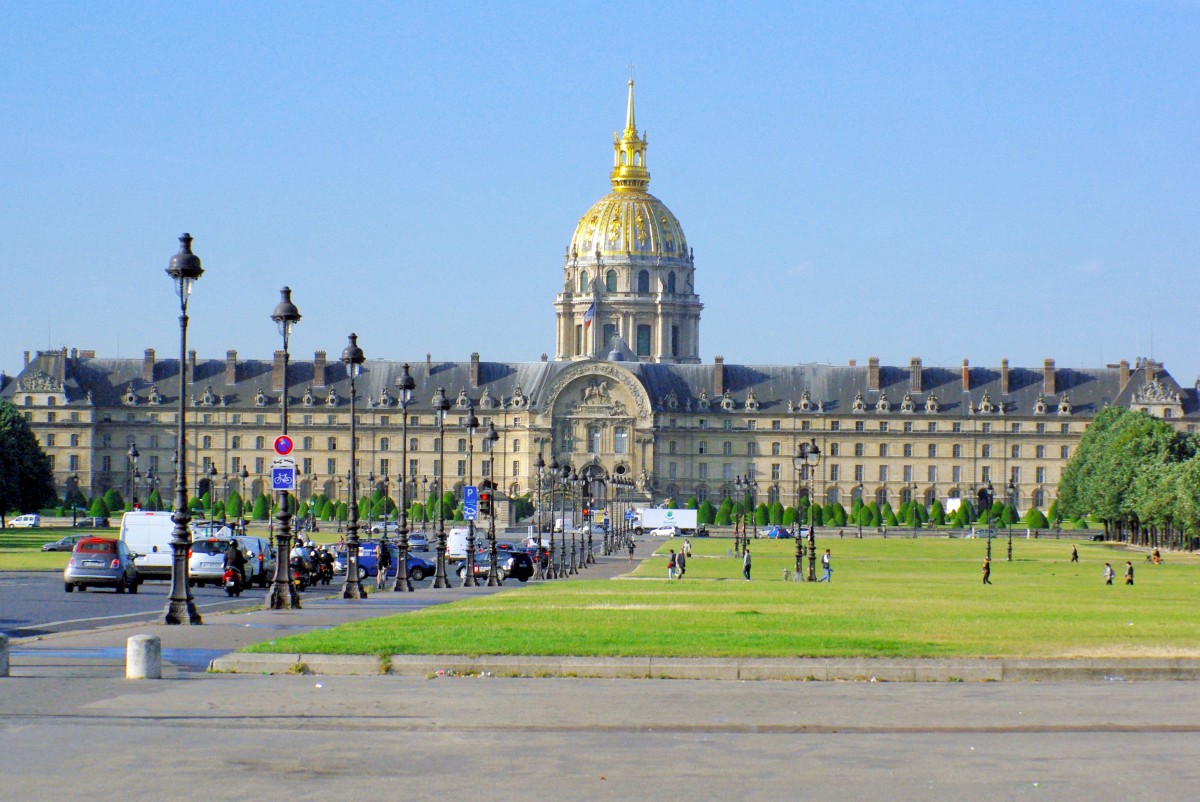
The Hôtel des Invalides is a gigantic complex built by Louis XIV as a home for the wounded and disabled soldiers of his army. The French emperor was buried beneath the Dôme church in 1840.
- Les Invalides has two entrances: Esplanade des Invalides, 129 rue de Grenelle AND Place Vauban. Visitors with motor disabilities are invited to enter on the Place Vauban side. Check out google map for the exact location of the statue of Napoleon at Les Invalides.
- Open every day from 7.30 am to 7 pm (last admission and exit at 6.45 pm). From April to September, the domain is open until 9 pm (last admission and exit at 8.45 pm) on Tuesdays.
- Closest métro station: Invalides (lines 8 and 13, RER C), La Tour Maubourg (line 8), Varenne (line 13).
- Other sites to discover at Les Invalides: the Army museum, the Liberation Order museum, and the Relief Map museum. The tomb of Napoleon I is situated inside the Dome Church.
- Check out the official website for more info on your visit to Les Invalides + museums.
- >> Get your Tickets for Les Invalides: the Army Museum [Priority Entrance], Napoleon’s tomb and see war memorabilia! <<
Did you like what you read? If so, please share this article on Facebook or Twitter! 🙂
Pin it for later:
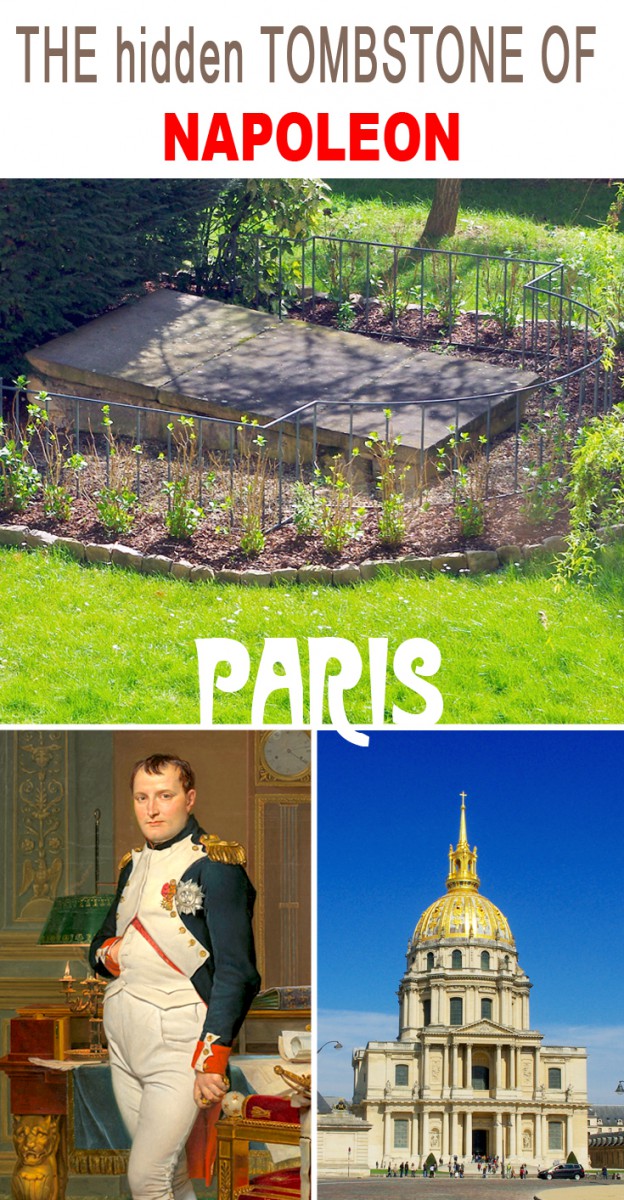




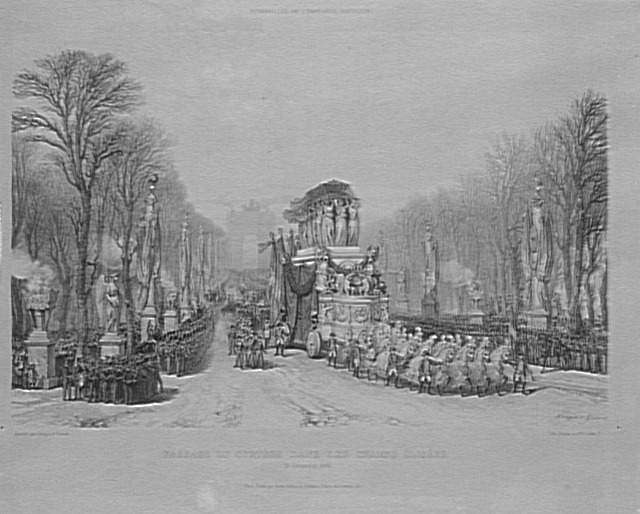

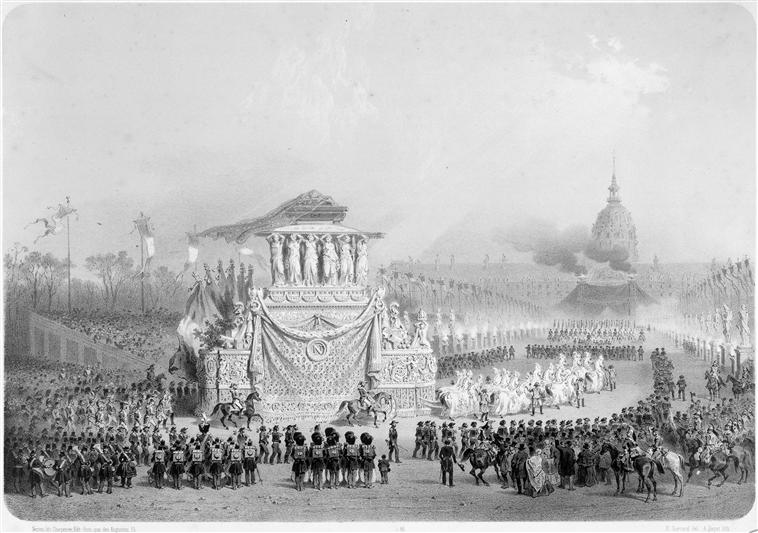

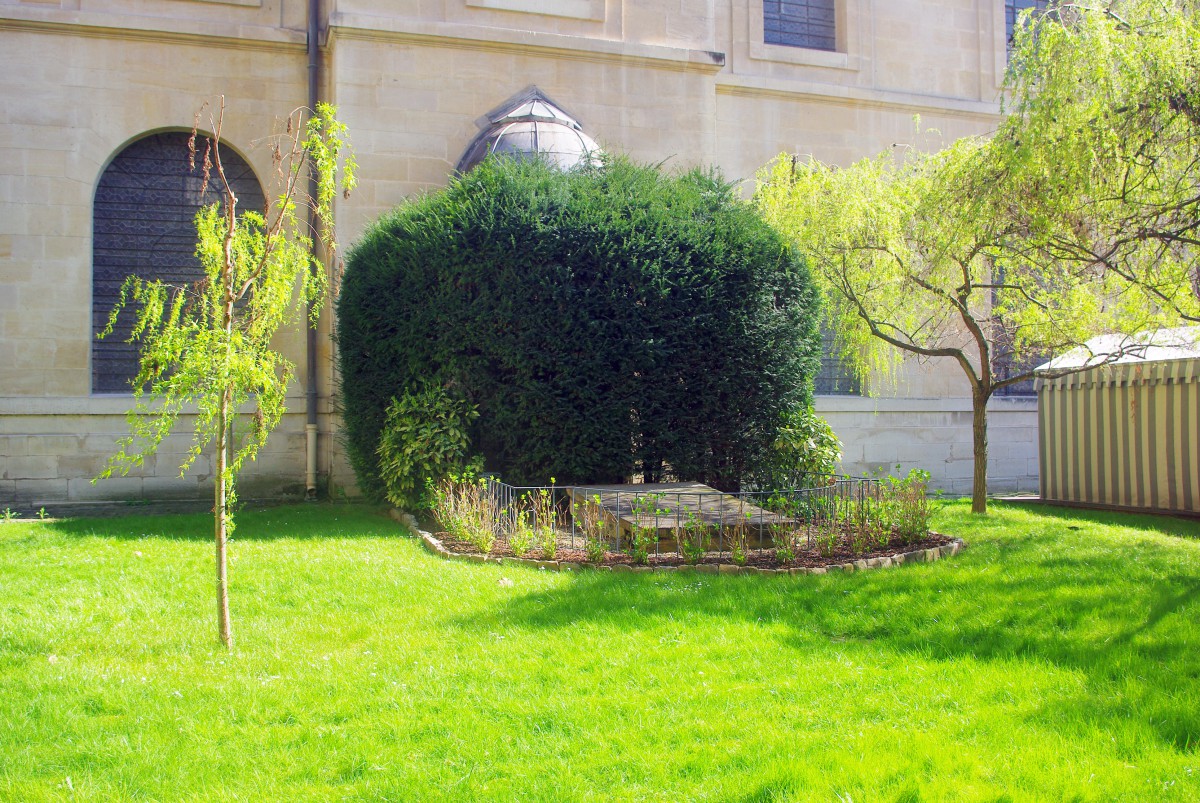
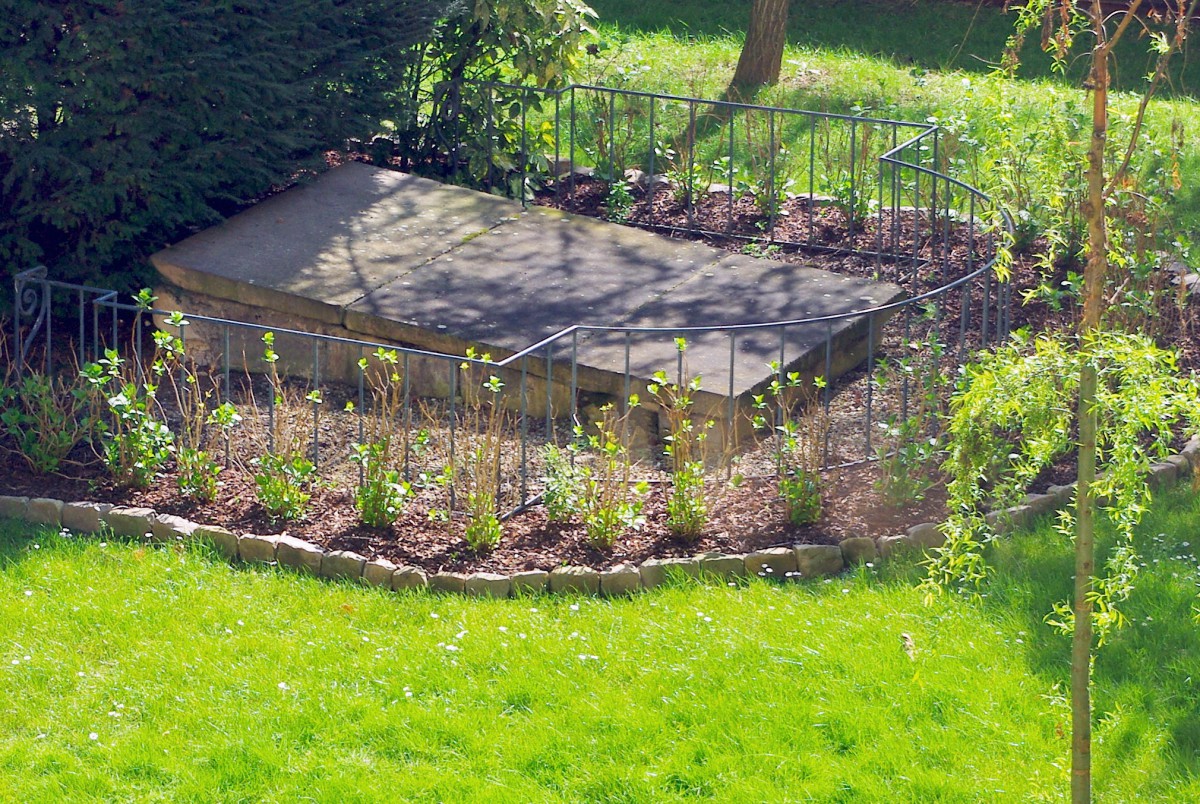
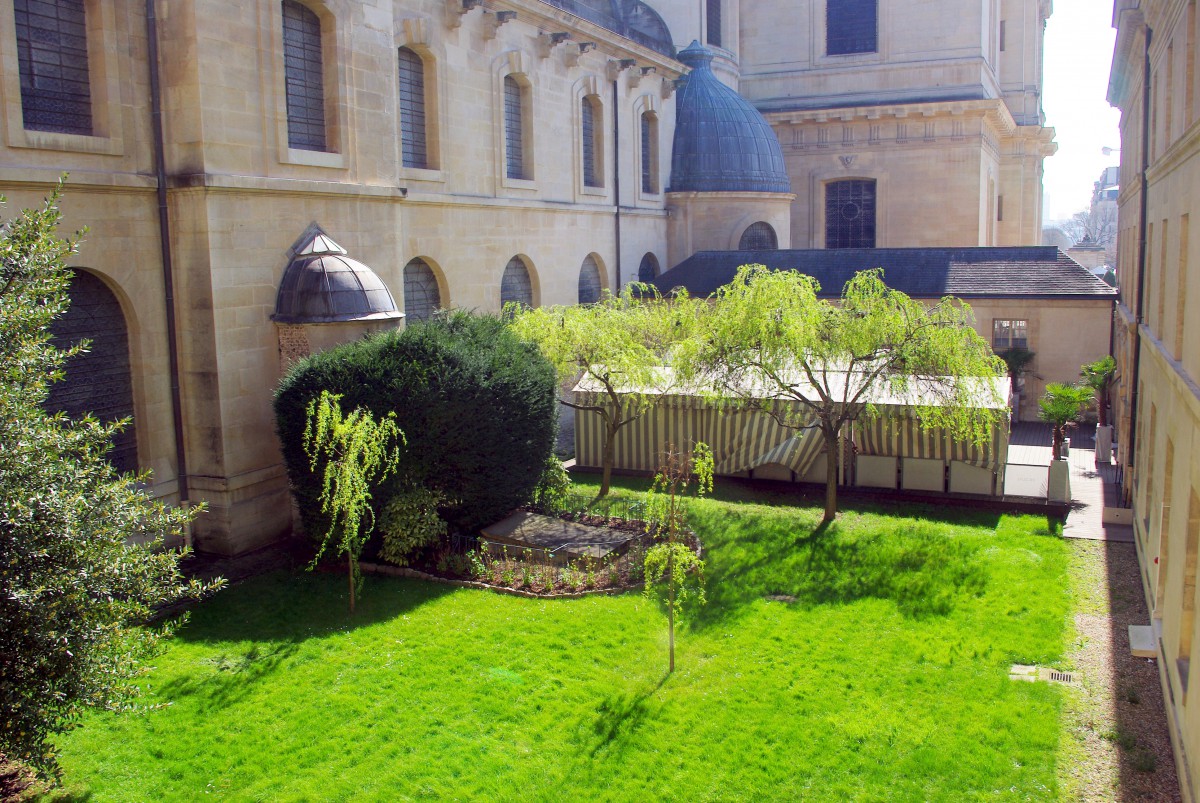


Oh wow how interesting. Thanks for a great post.
Thank you Bree! Happy to hear you found it interesting! 🙂
I had a lot of blank spaces when I opened today's note on Napoleon. So I opened a different browser which happened to NOT have an AD-Blocker.
Frankly it is unreadable, because it is so garbaged up with ads. Besides the constant ad at the bottom, I counted 13 others, and two more if I opened up the browser to a wide format.
If I did not have that ad-blocker, I would drop being a subscriber.
Regarding the content, I appreciate the work you do in finding images that correspond to the article. I'd seen this one about Napoleon's tombstone from you before, but it still holds interest.
Regards,
Bonjour Bruce,
Thank you for taking the time to share your feedback regarding your experience with our blog. I truly understand your concerns about the ads and I’m sorry to hear that they have impacted your reading experience.
Advertising is currently an essential source of funding that allows me to continue researching and sharing quality content on the blog. However, I am fully aware of how ads can affect the user experience, and I am constantly looking for ways to balance this.
In response to feedback such as yours, I am considering introducing a paid subscription model that would offer an ad-free experience for our most devoted readers. This would not only ensure a more pleasant reading experience but would also support the ongoing work and maintenance of the blog directly.
Thank you again for your kind words about the content and the images we select. It’s always encouraging to know that our efforts resonate with our readers.
A bientôt!
Pierre